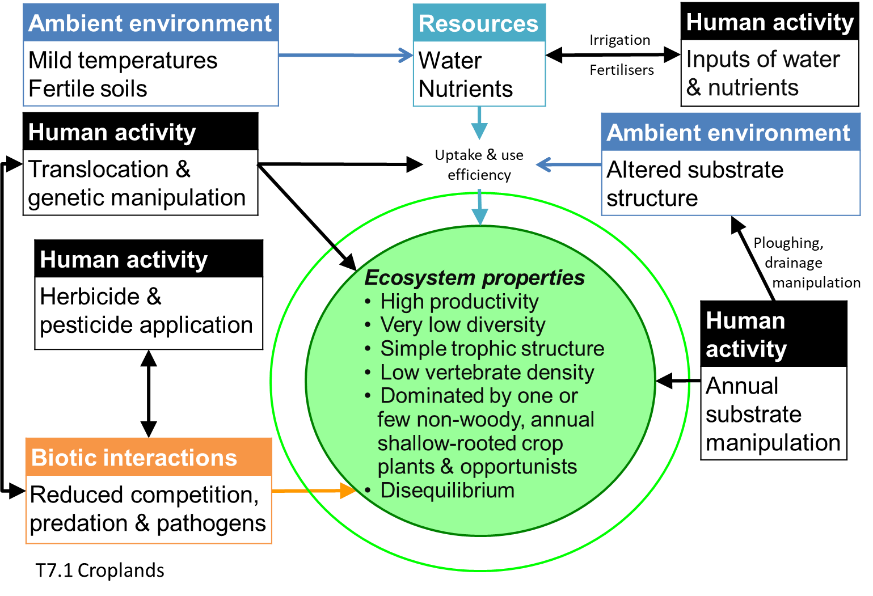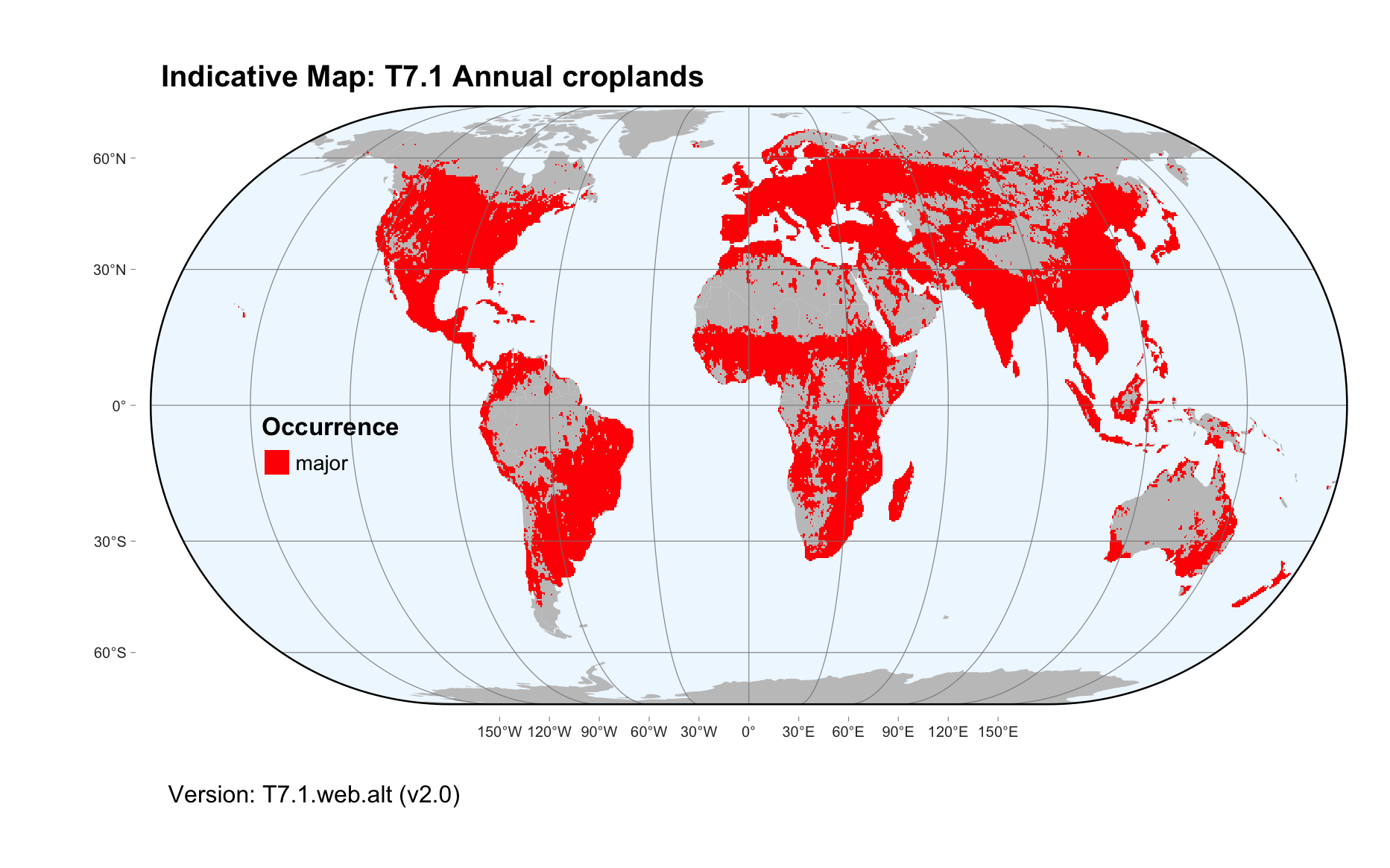Global ecosystem typology
Alternative site for the Global ecosystem typology with additional information for ecosystem profiles and indicative maps.
This site is maintained by jrfep
T7.1 Annual croplands
Biome: T7. Intensive land-use biome
Contributors:
(texts)
Croplands are intensively managed agricultural ecosystems maintained by supplementation of nutrients and water, sowing and harvesting, soil cultivation and control of non-target plants and animals (weeds and pests). They currently cover 11% of the world’s land surface. Some systems of management include domestic herbivores introduced on harvested stubble or in ‘fallow’ years. These are structurally simple, very low-diversity, high-productivity systems, dominated by one or few non-woody, shallow-rooted annual plant species such as grains (mostly C3 grasses), vegetables, ‘cut flowers’, legumes, or fibre plants harvested annually by humans for commercial or subsistence production of food, materials, or ornamental displays.
Key Features
Structurally simple, very low- diversity, high-productivity annual croplands are maintained by the intensive anthropogenic supplementation of nutrients, water and artificial disturbance regimes.
Overview of distribution
Tropical to temperate humid climatic zones or river flats in dry climates across south sub-Saharan and North Africa, Europe, Asia, southern Australia, Oceania, and the Americas..
Profile versions
- v1.0 (2020-01-20): DA Keith
- v2.0 (2020-05-31): DA Keith; R Harper
- v2.01 ():
- v2.1 (2022-04-06): DA Keith; R Harper Full profile available at official site
Main references
Selected references for this functional group:
Leff B, Ramankutty N, Foley JA (2004) Geographic distribution of major crops across the world Global Biogeochemical Cycles 18(1), GB1009
Ray DK., Foley JA (2013) Increasing global crop harvest frequency: recent trends and future directions Environmental Research Letters 8(4): 044041 DOI:10.1088/1748-9326/8/4/044041
Diagrammatic assembly model

Maps
Maps are indicative of global distribution patterns are not intended to represent fine-scale patterns. The maps show areas of the world containing major (coloured red) or minor occurrences (coloured yellow) of each ecosystem functional group. See general notes on maps.
There are 2 alternative versions of the indicative map for this functional group, please compare description and sources below.
T7.1.IM.alt_v2.0
Datasets
- Nature-Map-2020
Map references
Martin Jung, Prabhat Raj Dahal, Stuart H. M. Butchart, Paul F. Donald, Xavier De Lamo, Myroslava Lesiv, … Piero Visconti. (2020). A global map of terrestrial habitat types [Data set]. Zenodo. DOI: 10.5281/zenodo.3673586
T7.1.web.alt_v2.0

Datasets
- Nature-Map-2020
- EarthEnv-LandCover-v1.0
Map references
Martin Jung, Prabhat Raj Dahal, Stuart H. M. Butchart, Paul F. Donald, Xavier De Lamo, Myroslava Lesiv, … Piero Visconti. (2020). A global map of terrestrial habitat types [Data set]. Zenodo. DOI: 10.5281/zenodo.3673586
Tuanmu, M.-N. and W. Jetz (2014) A global 1-km consensus land-cover product for biodiversity and ecosystem modeling Global Ecology and Biogeography 23(9):1031–1045 DOI:10.1111/geb.12182
Check: the Glossary / Profile structure / the public document